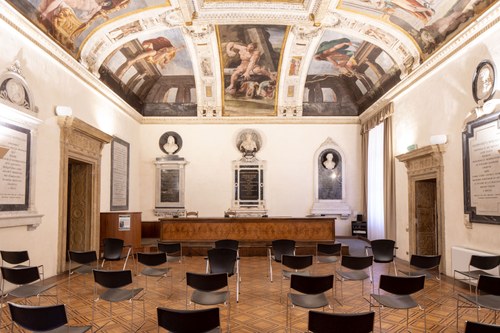The Academy of Sciences of Bologna Institute is based since its foundation in the prestigious Palazzo Poggi.

The Academy of Sciences of the Bologna Institute is based since its foundation in the prestigious sixteenth century building that belonged to Cardinal Poggi.
Actually in 1714, after a lengthy and hard negotiation with the city council, successfully carried out by Luigi Ferdinando Marsili --the founding father of the Istituto delle Scienze-- Palazzo Poggi was made available to the Institute.
The Palazzo Poggi’s structure dates back to the sixteenth century interventions to transform and widen the house bought by the Poggi Family at the end of the fifteenth century. The building, in two floors, was characterized by a big façade in via San Donato (now via Zamboni), an entrance hall, a loggia with porticos tangent to the square court, a grand staircase to the first floor; further buildings and courtyards were included in the Palazzo Poggi complex in successive epochs.
The placing of the Istituto delle Scienze in the Palazzo, occurred in 1711, implied a series of architectonic interventions—some of which rather relevant—that were necessary because of the new functions of the edifice. The building of the astronomic observatory tower dates back to 1712. The addition of another building facing via San Donato allowed to accommodate the Library, and was realized starting from 1741.
At present the second floor accommodates the Palazzo Poggi Museum with exhibits displaying furnishings and instrumentations— that belonged to the eighteenth century Istituto delle Scienze— which reconstruct the research and teaching itineraries that made Bologna science famous in the Modern Age.
Today The Academy occupies the entire ground level of the complex in the extraordinary framework of the 16th century mural paintings by Pellegrino Tebaldi who, in the two rooms named after Ulysses, retraces the story of the mythological hero.